Review: Chevy Cobalt, Brazilian Spec

GM do Brasil has been having many problems. Though dearly beloved by many Latin Americans, in Brazil its image has been severely tarnished. When GM promised a slew of new products that would substitute its ageing line, many doubted it. In fact, many doubted GM had it in them anymore. Like a phoenix, GM is being reborn. The new product onslaught is in full swing. First off the bat was the Cruze. Now, Chevrolet is really starting to put on offer its mission-critical small car, the Cobalt. Will it be enough?
First a little background. After a very prosperous and promising 90s, it seemed GM had called it quits in the 00s. Extreme penny pinching eliminated but the most basic forms of engineering and development. The interiors were the most hideous on this side of a Trabant. You get the picture.
GM managed to alienate much of their fan base. GM hit record growth. As they hit lower price points they grew and then grew some more. Even in a market like Brazil, so sensitive to prices, inevitably GM hit a wall. Sales started to fall. People caught on that they were buying the same tired car from 10 years ago. The competition improved by leaps and bounds. GM not only stalled, they seemed to go back. Most people buying the General’s cars were doing so because of the ‘deal’, not because they liked the car. How would GM climb back out the hole it had dug?
To find out, I headed on down to my local friendly dealer to see and drive the Cobalt. To gather some impressions that I’ll now share with all of you.
What first hit me was the back. Big. The Cobalt sports one the largest trunks in Brazil (always good for a people who are big into, well, trunk. It’s a shame then that its space is not all that useful. Though it has great capacity, a lot of this capacity comes from the lid being very tall. As the car is relatively narrow, you may just have to put your bags side by side instead of one on top of the other.
In Brazil, the car is sold with a 1.4 L engine, which is good for 97hp on Brazilian gas or 102hp on ethanol. On the sugarcane juice it puts out 13kgfm of torque. This all means that if you want the car to go, you’ll have to row your gears with competence and keep the revs high. This car weighs little more than one metric ton and this taxes the little engine. Imagine this large car, loaded with baggage in the huge trunk and 3 good size teenagers in the back. Daddy will have to plan his passing and merging gingerly.
GM talks about 0-100km/h times of less than 12 seconds. My highly scientific test methods, laying on the accelerator, and keeping it floored until the shrieks of the salesman makes me slow down, make me believe in something around 14 to 15 seconds. If GM is to be believed, this car will, with a backwind and an endless straightaway at sea level, get to 170km/h. The torque available for such a small engine is nice and it feels like that there is some at lower rpms. Like Americans often times repeat, there is no replacement for displacement and miracles are rare to come by. My short test drive showed me that you will need to rev, but this little engine does not rev as freely as other small engines I’ve tested. It becomes gruff and complains as the revs go up.
Alas, my test drive was limited. Worried that my unwilling partner was going to hit me after a few short bursts of acceleration, I couldn’t test it in the curvies or broken pavement. If you believe what the press is writing though, it does feel solid. It drives like a big car, with all the good and bad that entails. According to the press, it does do curves nicely enough. My impression is that at a sedate pace it will be comfortable enough. It rides on 15′ wheelies. The tires are 195/65, which is good as sidewalls thinner than that become very tiring on Brazilian roads due to bad maintenance.
Inside is where this car really shines. The seats and even the instrument cluster have been seen before in the Agile. However, the seating position is much more straightforward and less convoluted than in said car. There is good head and shoulder room. Your legs will not bump against anything either. Very good. As this platform is all new and global, and was done taking into account that new thing called ergonomics, it’s easy to find a comfortable position (without having to twist your spine like in the Agile and other GM small cars heretofore). The greatest ergonomic mishap is that the power windows’ controls are too far back on the arm rest. Thus, you’ll be forced to get your hand in all kinds of weird shapes to access the switches.
The seats themselves apparently are a little bigger than those found in other cars of this segment in Brazil. They also seemed comfortable enough. They have a nice wavy pattern on them and manage to escape the black on grey theme found in almost all other small cars in Brazil. The dashboard and door panels use plastic a touch above the competitors which is nice for GM in Brazil (head bow to you). Like the seats, they also managed to get some greenish and brown hues into the plastic making them much more visually pleasing and soothing than those in competitors.
Another nice touch is that GM has used bits and pieces from the Cruze in the Cobalt. This gives it a nicer overall feel and will please all but the most soft-plastic fanatic. The turn stalk, for example, is the same one found in the Cruze. The instrument cluster is like in the Sonic reviewed by Steven Lang. Inspired by sport bikes it is different from the norm. My only gripe is the needle of the tach. Seems like a really cheesy piece of very cheap red plastic. Few people will notice or care though.
The exterior design is pleasing. At first glance, Brazilians will be forgiven if they just think it’s an Agile sedan. But pay close attention and you’ll see that the Chevrolet family truck-like fascia has been softened. The little curves make all the difference and while on the Agile it is ugly, on this car it works. The greenhouse is short, much more so than in the main competitors Logan and Versa, but it follows the spirit of the times and most people will mindlessly sacrifice visibility for style. The sides as slab-like. This is fine with me as I’ve said it here before, I like boxy cars. However, the tall cabin and seating position, plus the relatively low hood and very high trunk lid make parking sensors almost an obligation on the car.
Taking it all in, design-wise there are just two ill-resolved issues. One is the trunk lid. It’s very tall. This characteristic is punctuated by having a crease run down the middle of it. This visually spikes it up even more in a place where I think it would benefit from being flatter. There is another odd crease that starts out in the back of the car and makes its way through to the back door where it plunges down and just dies. It appears to be there just to break some of the slabness. However, the execution was clumsy and, especially on lighter-colored cars, it makes it seem like the car’s been hit. The first time I saw Cobalt in the wild, the first thing I noticed was what seemed like a huge dent in the back door. No, it’s just that styling effect.
All in all a good, professional design. A little boring, but sedan buyers in this segment in Brazil are boring, I mean conservative. The few pieces of chrome here and there sophisticate it a little, the proportions are generally ok. At the price point, you really can’t complain. Much more of a looker than the Renault Logan that, with the exception of me and a few ex-Soviet bloc expats, nobody likes. The other main competitor is the Logan-in-Japanese-drag, the Nissan Versa (Sunny in America), which is very Asian. Which is good or bad depending on your personal tastes.
So now we come to pricing. Let’s consider that, roughly, 1, 80 Brazilian reais equals one American dollar. This cars starts at $39,980 (US$22,200). This gets you the basic LS trim, which gives you AC, hydraulic steering, power locks and a pocketknife key (don’t ask me why but this is a big deal in Brazil and GM proudly emphasizes this, I mean on a VW Gol you can pay extra to get one!). There is the intermediary trim and the top of the line LTZ that starts at R$45,980 (US$25,500) and adds special alloy wheels, power windows (only front doors), double airbag, ABS, fog lights in the front, trip computer and CD player. Sadly, this makes this car very competitive in Brazil. In our not-so-little-but-still-very-warped market this makes the Cobalt really attractive, GM predicts sales of 3,500 cars a month, and I believe it. Especially after the market knocks off at least R$2,000 from the basic one and maybe 3 or 4,000 from the LTZ.
So like the Sonic previewed by Steven Lang, two big hits in a row for GM on TTAC. Must be some kind of record.

More by Marcelo de Vasconcellos
Latest Car Reviews
Read moreLatest Product Reviews
Read moreRecent Comments
- ToolGuy The only way this makes sense to me (still looking) is if it is tied to the realization that they have a capital issue (cash crunch) which is getting in the way of their plans.
- Jeff I do think this is a good thing. Teaching salespeople how to interact with the customer and teaching them some of the features and technical stuff of the vehicles is important.
- MKizzy If Tesla stops maintaining and expanding the Superchargers at current levels, imagine the chaos as more EV owners with high expectations visit crowded and no longer reliable Superchargers.It feels like at this point, Musk is nearly bored enough with Tesla and EVs in general to literally take his ball and going home.
- Incog99 I bought a brand new 4 on the floor 240SX coupe in 1989 in pearl green. I drove it almost 200k miles, put in a killer sound system and never wish I sold it. I graduated to an Infiniti Q45 next and that tank was amazing.
- CanadaCraig As an aside... you are so incredibly vulnerable as you're sitting there WAITING for you EV to charge. It freaks me out.



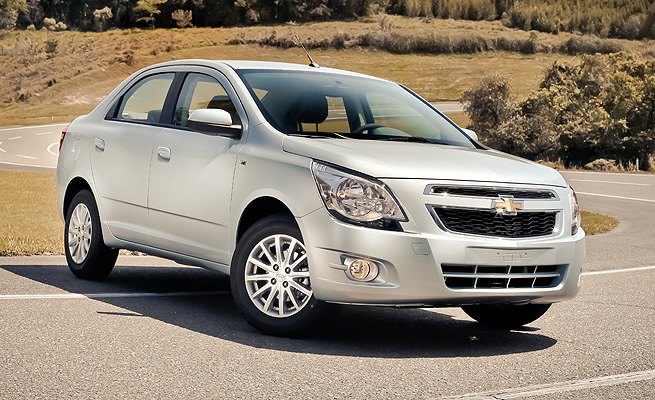


















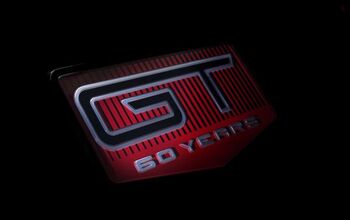
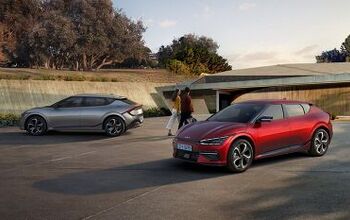
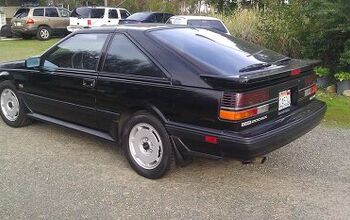


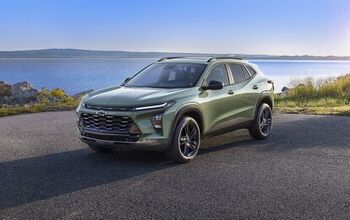
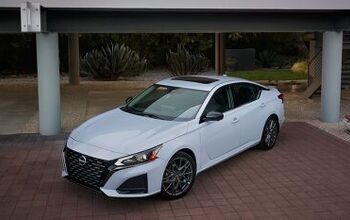


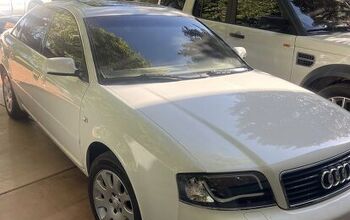








Comments
Join the conversation
Friends of ours in Joao Pessoa (moved from SP) bought the Agile 5 door. Had a chance to drive it last March whilst visiting them. I really liked the looks of it. The ride was pretty decent. The roads around Joao Pessoa (and westbound from Recife) are pretty bad so any car that handles those roads impresses me! I've found our friends fanatical loyalists in Brazil. If they buy Fiat, they always buy Fiat. If they buy GM, they stick with GM. My Brazilian spouse always owned Fiat, but is disappointed by the new 500 offered up here. It will be disappointing if GM axes the Montana. Every time I visit Brazil I find myself attracted to the mini-trucks from GM, Renault and the rest. I wish they'd offer them here. My first new vehicle was a '82 Dodge Rampage, not unlike the Montana of today.
I always wonder why everyone complains about the styling and performance of such cars. First of all, this car isn't designed to look good. It's a budget car that's designed for spacial efficiency. Polarizing design is not part of what the car needs. Second, it's a budget car - again. The performance is sufficient for those buying it. Want to make it faster? Throw out the rear seats, spare tire and all excess weight and maybe then you can beat that V6 Camry at the light. Oh wait, they don't sell a V6 Camry in Brazil. They don't even sell a V6 Camry outside of North America. Volkswagen sells a V6 Passat in Europe - and nobody buys them. I think the styling is ok. It doesn't look bad, but it isn't pretty either. If I lived in Brazil, was short on cash and required a car, there are probably even cheaper cars available which means this Chevy is quite a step up and thus a desirable mainstream car for the masses.